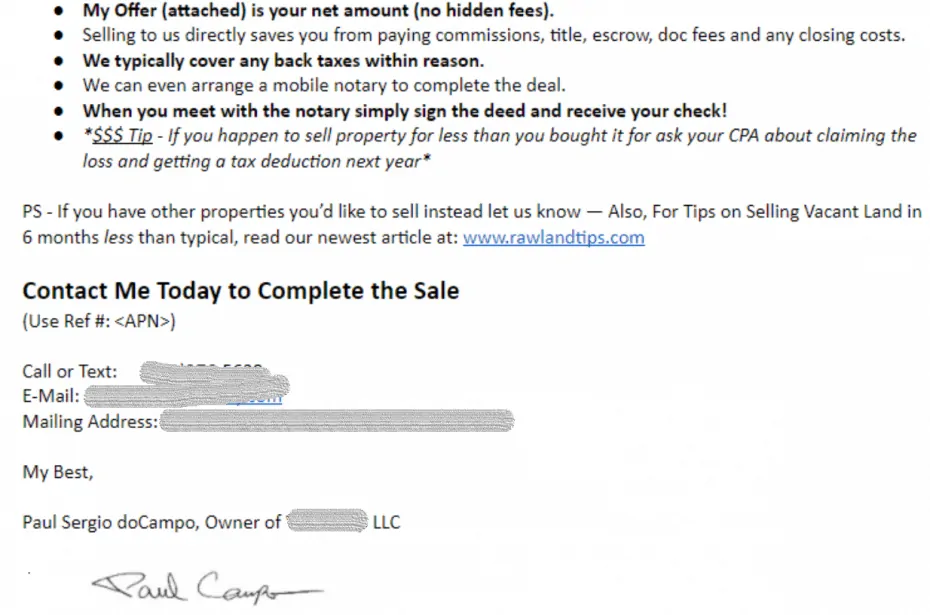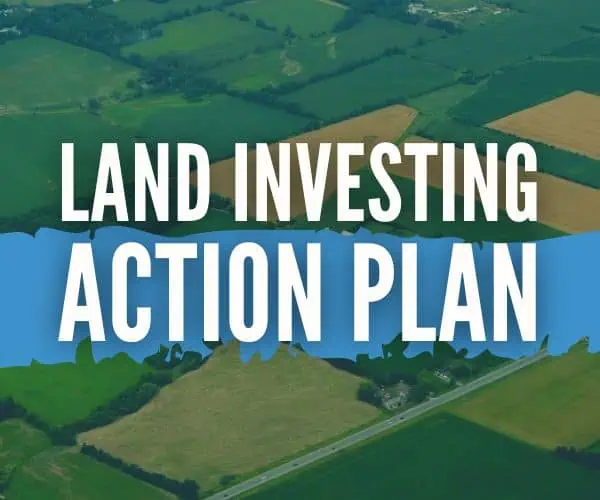
It’s a no brainer; Investors understand how important salesmanship is to closing and selling deals. But what about copywriting? Some would say “Yes!” and others no. And it’s hardly a topic mentioned by gurus, blogs, and investors on social media.
But I’ll let you in on a ‘secret': I’ve interviewed many top investors, guys, and gals, on my podcast “Deals Today”, who have done hundreds of deals in their career, and when I ask the question of, “How do you find deals?”, or “What do you do differently in your marketing”… 6 out of 10 mentions having good copy.
There’s a reason why mail-order businesses and high-producing internet businesses pay 5 to 6 figures for a copywriter to write one campaign. If you don’t believe me, search for how much Dan Kennedy at www.nobsbooks.com charges for copywriting and consulting.
As real estate investors, we put a lot of emphasis on sales, but most of us don’t put a speck of energy into studying or at least knowing what good copywriting is. However, in any industry (especially REI, as I have witnessed), changes in your letters, campaigns, scripts, etc… can double response rates, justify price increases, and accelerate sales. As one of the forefathers of mail-order advertising Claude Hopkins in his book, Scientific Advertising, says
“All copywriting is sales-in-print. Ads are like ‘little salesmen’. If any of our salesmen can’t do their job of selling, we fire them.”
The same goes for ads and letters.
They have a job: to grab attention, get responses as much as possible, and sell. That’s an aspect of our process that can always be improved. Yes, especially in our industry. I’ve heard it said,
“But buying and selling houses is different!”
As if human psychology changes from one industry to the next?! Copywriting and salesmanship leverage human desire and emotion. Human behavior has never changed, especially from industry to industry.
However, being a copywriter myself, who's written for many investors and clients of Investor Carrot, I’ll be the first to say copywriting doesn’t improve all problems. Copywriting won’t improve a poor list, a poor business process, disorganized sales, or poor follow up. These things come front-and-center first. Then we can worry about copywriting and marketing.
RELATED: How I Find Motivated Sellers (And Get Them Calling Me)
When you have a business that will support increased responses and sales, then that's when injecting copywriting principles into your acquisition process and sales process comes into play. I’ve studied and practiced copywriting since 2016 in my own business as well as for clients, so I’ve come up with 3 of the most dramatic improvements you can make to any sales letter, ad, or script for real estate investors to increase response.
1. Paint the Picture
“Vision drives decisions.” – Jim Camp
Jim Camp was one of the greatest negotiation coaches. His principles of negotiating branch out to the highest global corporate levels to inside FBI protocols. And… they can be used every day with sales.
Jim Camp capitalized on the human psychological principle that people cannot make decisions based on pure logic. They make decisions based on emotion. If you don’t believe me, read the book “Influence”, by psychologist Dr. Robert Cialdini.
A very simple way to move people's emotions and drive them to make a decision is through vision or their imagination. Let me demonstrate this by introducing you to the greatest living copywriter (at the time of this writing), Gary Bencivenga. He’s considered the best today because no one has been able to beat the response rates of his campaigns when he was mailing for many mail-order businesses in the 90’s. He described in an interview, how he sold clients on choosing him (and his enormous $25k upfront fee and .05 cent PER LETTER royalty). He would tell them (I paraphrase):
“I want you to picture all the bags of checks and orders coming into your office every month from this mailing. That’s what I’ve done with previous clients and that is my goal with you.”
A simple “I buy houses” ad, or a “Check out my 1-acre Arizona Parcel” sales page, gives no vision or imagination to the prospects' emotions. We are selling to people. And these prospects have desires and wants, and problems that want to be solved. A letter can be boosted in effectiveness just by “painting pictures” of what is to come; what is going to be solved for them; what dream can they achieve.
Let me stop being esoteric here and give you some real examples for REI.
When I was regularly selling vacant land, I had a parcel with a HUGE downslope. It was almost 45 degrees down, or 100% sloped in the mountains. People were turned off by it… until I realized what the greatest use of the property is for: to build an incredibly unique property overlooking the mountains and trees.
The only person that was going to buy this, was a person who dreamt big and loved the idea of being unique and different. So, I “painted the picture” writing a description of someone with a beautiful-looking house on a downslope, where they could,
…wake up in the morning with a fresh cup of coffee, opening up their back patio getting a fresh scent of pine and crisp mist while sitting out there overlooking the birds and the trees.
I continued “painting that picture” with images of real cabins built on a downslope to show the true potential, like this one:
You don’t have to get all poetic with this either. “Painting the picture” can be as simple as telling them what they are going to receive at the end OR telling them the pain that they'll get if they don't take action. It’s not always a positive “picture”. Fear can be a great motivator as well. Here’s what I mean for both positive and “negative” pictures:
“As you may already know, vacant land usually isn’t easy to sell and can take months or even years. But if you’re tired of paying property taxes and you no longer have a desire to own the land anymore, then I can help today.”
“The thought of paying another monthly mortgage payment literally kept me up at night tossing and turning and sometimes waking up in cold sweats when I finally did get some shut-eye.”
“You’ll never have to leave the house to sell your property, and you’ll get your cash instantly delivered to your bank account (or check delivered).” [Example of a positive picture]
There are all kinds of ways you can do this. But the bottom line is: Show them the details of what can happen (good or bad). This will help them envision the success or failure that can come out of it. It keeps them interested in your ad and keeps them reading. It SERVES them, by enticing them to act.
RELATED: 4 Proven Tips That Sell Properties Fast
2. Increase Credibility by Answering Objections
Right after COVID-19 happened, world-wide, the number of scams skyrocketed. Not just “Corona Virus Scams”, but even dirtbags taking money from the elderly.
For example, every day my phone kept getting blown up with calls (3-8 a day) from “social security” scammers trying to rip the elderly off (fortunately for me I’m only 34 years old and don’t worry about my social security benefits coming to an end).
The number of scams has gone up every year, and people's skepticism has gone up along with it.
How do we combat people's natural skepticism when they receive our cold-calls or cold-letters/ads? Fortunately for us, skepticism isn’t new and marketers have been dealing with it since the dawn of consumerism.
One tool and skill that copywriters must become masters at overcoming is skepticism. We need to demonstrate credibility or prove our promises. In this business, especially, there is high skepticism among sellers and buyers; Sellers/buyers saying to themselves, “Is this for real?”. As salesmen, we have to be constantly answering objections.
So here are a few ways to answer the common objection, “Is this real?” and demonstrate our credibility in our ads/letters…
Contact and Business Info Displayed
When I started, there was always the debate about whether to put a website URL in the letter or not. And often, some people would say that just a name and phone number is best. But they said it without truly testing it (sending out 5,000 letters to one list is not an accurate test, and most people don’t really know how to test according to articles like this one).
However, today… placing your name (whether it be a company name or personal name), can have a huge impact on your perceived credibility and ultimately your response rate. According to this Forbes article, 65% of adults search a company’s name online before doing business.
Having your full contact info displayed boosts your credibility with prospects. They are going to search you out anyway, so you might as well make it easy for them to find you.
Still don’t believe me?
Let me pound it even further. I am proud to say that I purchased a property from a well-known California Republican State Legislature, Former mayor of a well-known resort town, and gaming entrepreneur solely through email communication, initially started by my direct mail piece. He was a very sophisticated man and fully understood the scams that are prevalent in direct mail.
In that letter, I showed my full name, my website, email, phone number, and even LLC name. Displaying this information does not hurt, and only increases your credibility – i.e. you prove that you are a legitimate business/person.
Prove You Own It
One of the most common thoughts of a retail land buyer is,
“Do you actually own this property?”
This ties into the last tip, but you should be showing people that you actually own the property (or contract). One way you can do this for land is to offer a brief explanation of how to check county records. You can place this copy in the middle or end of the letter:
“There are a lot of real estate scams going on. So, to make sure you are comfortable about buying, here’s a very quick way to check the ownership of ANY property in [County]. Call [number] and just simply ask them, ‘Who owns the property at [APN/ Address]?’. That is public information, and if you check this property you will see that [LLC/CORP/NAME] owns. Then, you can ask them ‘Who owns that LLC?’ and you’ll see that it’s me [Name].”
What About Wholesaling?
How do you prove it’s not a daisy chain? Well, no one can call the Closing Attorney or Escrow to get contact information… but… you can show proof of previous deals you did with Closing Statements. I once wrote a letter for a SFR flipper who gets deals via other brokers. So, I proved that he delivers by giving links to past MLS listings of all his flips.
“Proving” is a powerful skill set for any salesperson to know. Any hint of skepticism or disbelief will have your prospect running to the hills. So here’s a good article on more techniques for “proving”.
3. Selling with Details
Most of the letters, emails, and pages I've been hired to rewrite are dry, boring, and don’t SELL. I get it… a lot of campaigns by wholesalers are designed to just carpet-bomb the hell out of an area and hope that their simple “I buy houses – I want to buy your house – Call me” yellow letter with red ink… lands at the right time, the right moment, and with the right mood of a motivated seller.
That is the common “copywriting advice” given and soon enough, your market is bombarded with the same templates and scripts. Pretty soon, your seller’s brain has tuned out the noise much like we’ve tuned out the same road signs we say every day on our afternoon commute.
There is a simple way to add not just selling power to your ads but help you stand out in a crowded market where other investors/wholesalers/flippers all use the same templates.
“The more you tell, the more you sell”
There’s a saying in sales, “The more you tell, the more you sell”, made popular by the father of modern advertising David Ogilvy.
We, as consumers, want details. The old school copywriters lived by this, often having 40-page sales letters with the goal of merely selling a free book or newsletters. Then there’s the opposite of that thinking: investors, who are buying equity (worth anywhere from $10k to $1mill or more) or selling property worth 5 to 6 figures and do so with a one-page letter merely giving the offer.
There’s a stark difference there. So, let me repeat: Mail-order copywriters (charging $25k-$60k upfront) have been known to battle it out by writing upwards of a 40-page sales letter just to give something for free – vs – investors only using a one-page letter to ask for a $300,000 property at 70% discount or Selling a $15,000 parcel.
You might be saying,
“Well, all the ‘selling’ takes place in the appointment”.
True… but you don’t get the appointment unless you sell them for the response and sell them the appointment first. One of the best copywriting and advertising teachers in the mid-1900s was Clyde Bedell. He didn’t stress this impairment enough; that 90% of the ads lacked this same selling power that exists in the REI industry.
I’m not talking about merely adding more pages. Just adding details, features, and benefits to your copy greatly enhances the selling within the ad. Let’s start with the first, shall we?
“Details, Details, Please!”
Since the 1920’s when Claude Hopkins first wrote the revolutionary book on copywriting and up to today, the old “debate” of long copy vs short copy still stands. But, it’s hardly a debate. Great advertisers know it is not about the length of the copy that sells… it's the interest level that it holds. Short or long all depends on whether your copy can hold the reader's interest or not. In our industry, skepticism is high. And If our prospect feels confused or uncomfortable about the outcome, they won't take immediate action.
So, one quick way to increase and hold their interest level is to explain your process. As part of one of my “workhorse” letters I used for land acquisition, I explained step by step how I buy land from them. I tell them things like,
- What happens when they call me
- Who will answer the phone
- How I will schedule a mobile notary
- Where I will obtain the notary
- How I will pay them (in a cashier’s check so they feel as comfortable as possible signing the deed over)
This applies to many forms in the REI business. For instance, when selling land, you can explain the entire sales process: What escrow and title you use, how long the process is, how the exchange happens, etc.
Features
Details aren’t just exclusive to processes. You should include details (features) about the real estate itself. It’s amazing how many agents leave out crucial data and information about the house and area that’s important for the consumer. Things like:
- how far shopping centers and recreational centers are,
- school districts,
- the functions of the rooms (can it be an office, loft, etc.)
- technological details if any (electric fireplace, ‘never go out’ energy-efficient bulbs)
Benefits
Features are the “dull, dry” details of an ad. They give off extraordinarily little selling power when used by themselves. That is why it is also important to explain what these features will do for your prospect. Features support the benefits your prospect will get.
For instance, it’s not enough to just say,
“10-acre lot in the desert for sale”
If you want to sell a property like this, you need to explain what this means, like this:
“You can enjoy 10 acres of freedom while dry camping under the bright stars with no neighbors in sight, 10 miles from any highway— with 10 acres all to you, in your name, it gives you the American Right to off-road, shoot, live on, camp, pass the property down, and explorer as you wish in this desert of 10-acre freedom for a bargain price.”
Or…
“In 5 days, you’ll get the full sale price (no hidden fees) wired or mailed to your house without lifting a finger or spending a dime in repairs.”
Or…
“The electric fireplace heats the whole room as much as a wood fireplace for you to cozy up in the spacious living room in front of the entertainment center at night”
The feature is the physical “thing” while the benefit is what it’ll do for your prospect, like: “dry camp under the stars”, “off-road”, “get a check without lifting a finger or spending a dime”, “heat the entire room and cozy up…”
Here is another way of putting it. Currently, I’m writing a multiple-page direct mail package selling a $2 million empty lot to developers. The lot is near the tech capital of the world. So, the broker (who is an excellent salesman) wants us to remind the readers of the prestigious benefit of owning property in that city, by listing off and telling the story of why it’s so prestigious and wealthy. Benefits help with the “vision” for your prospect. This is what selling is all about.












